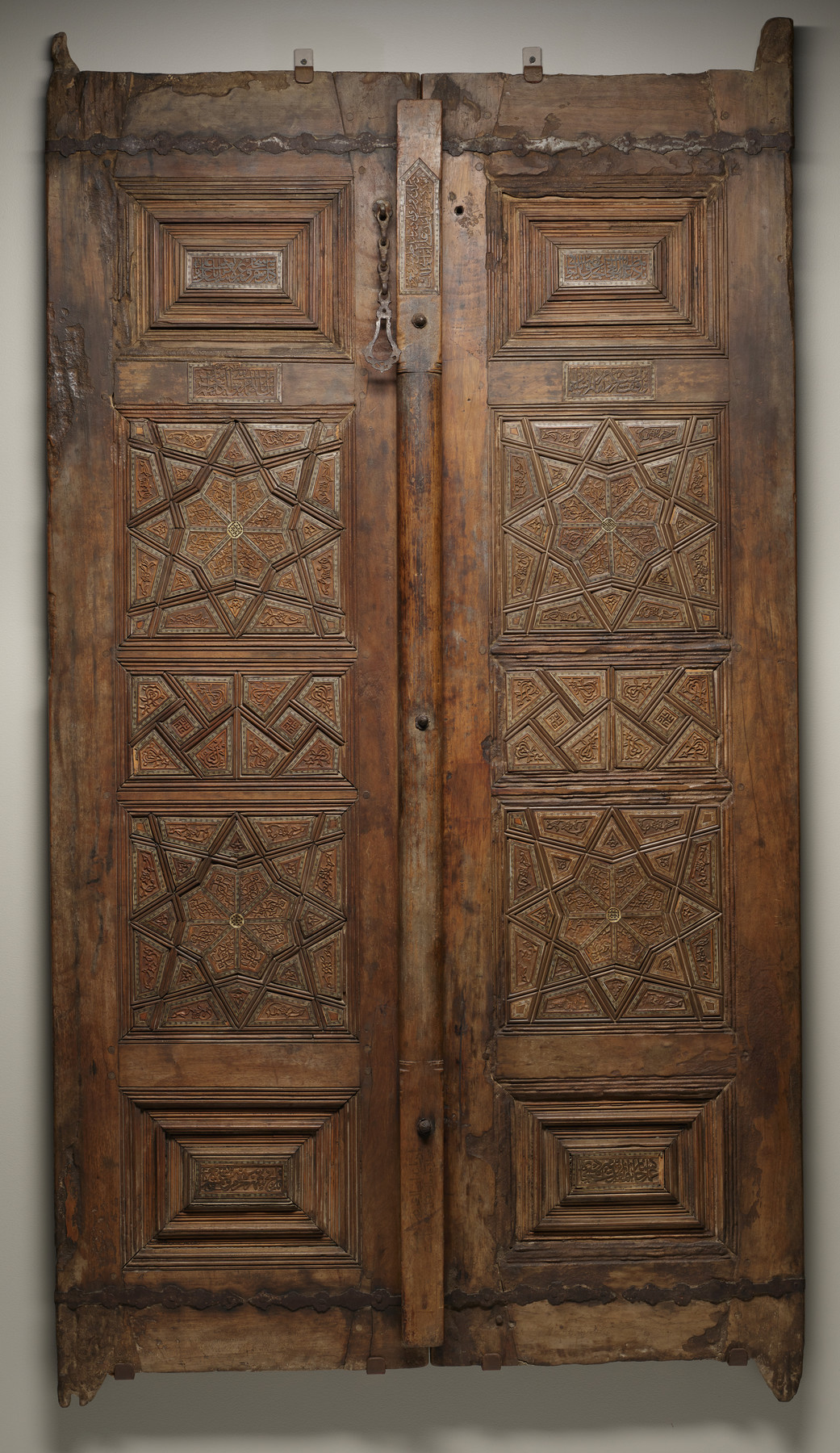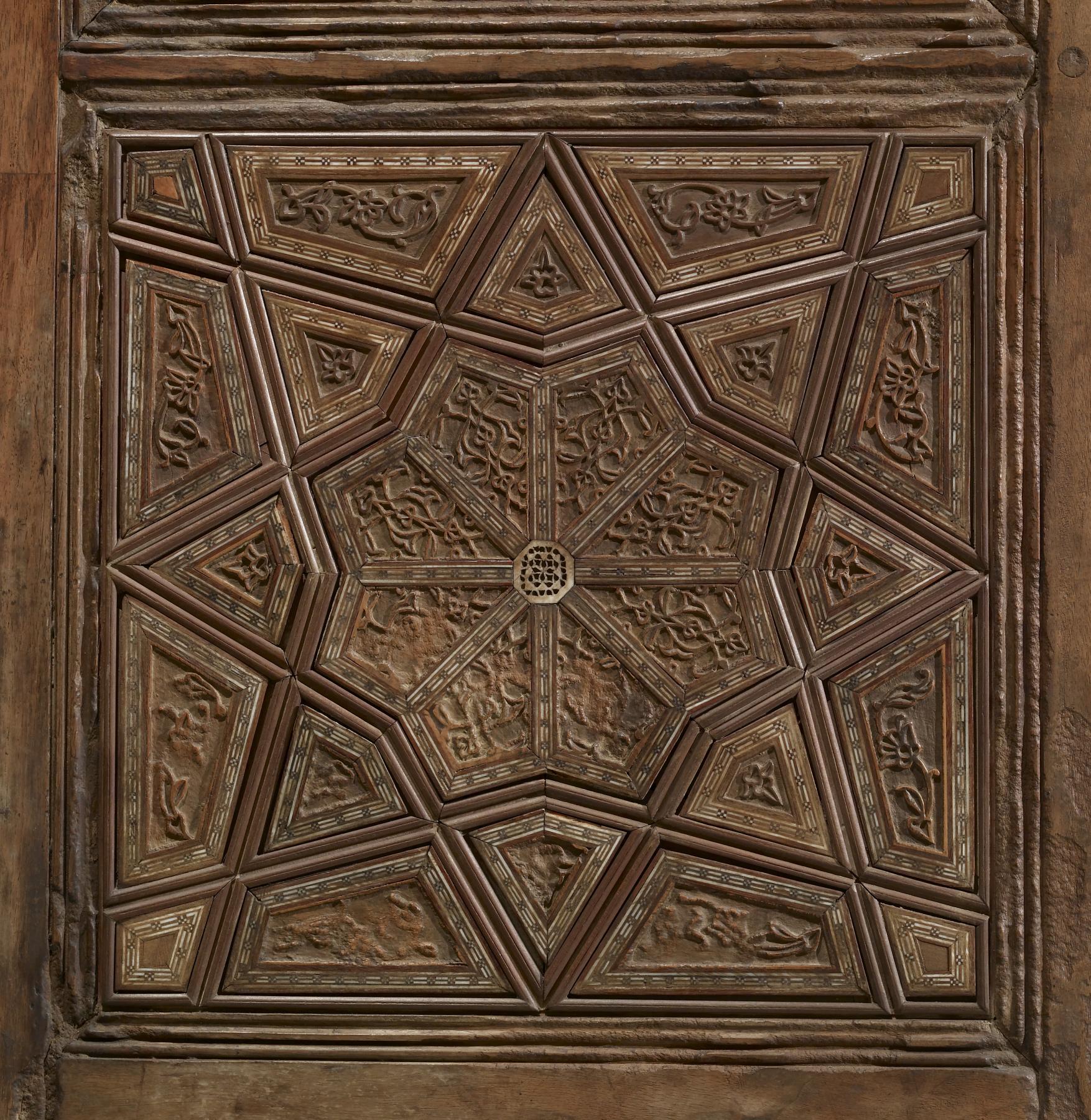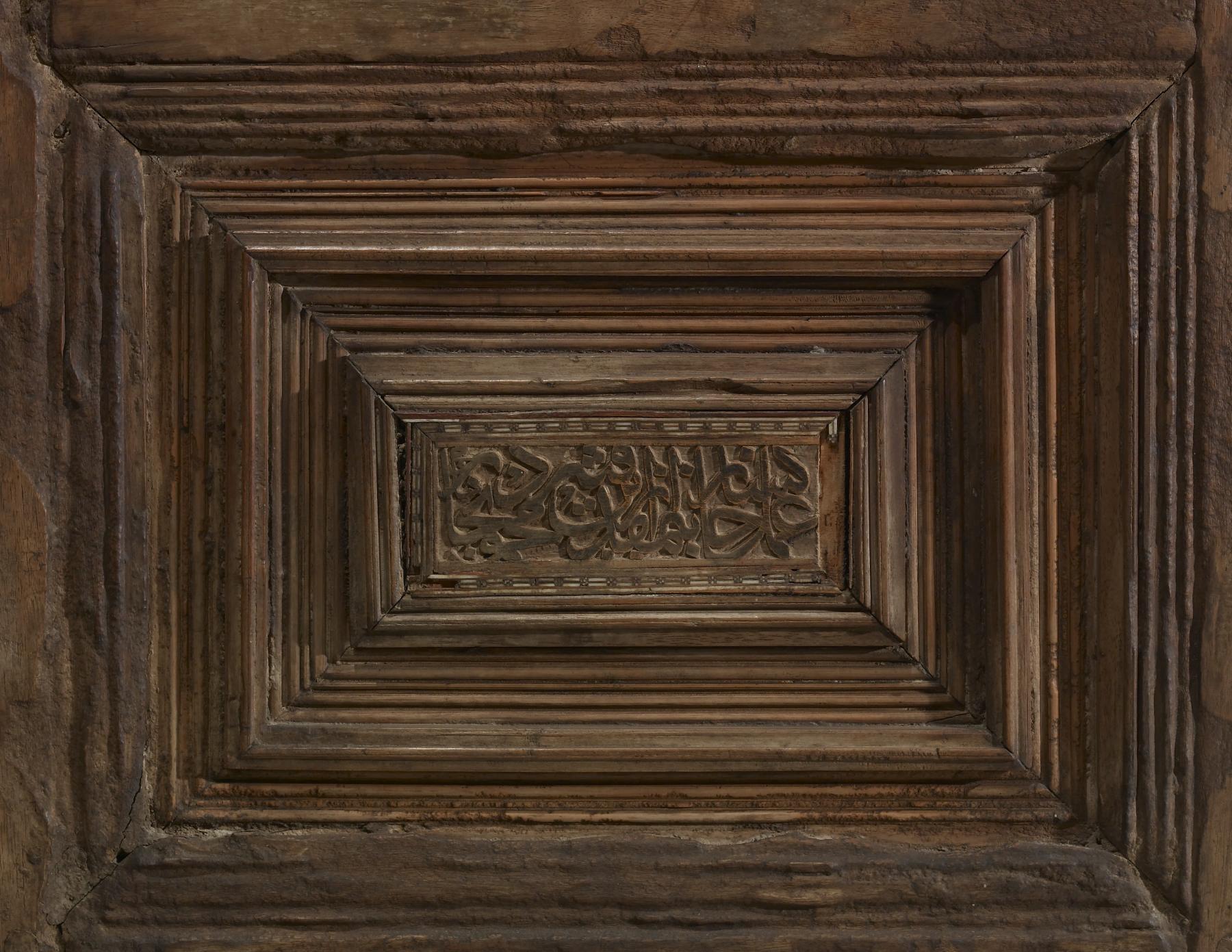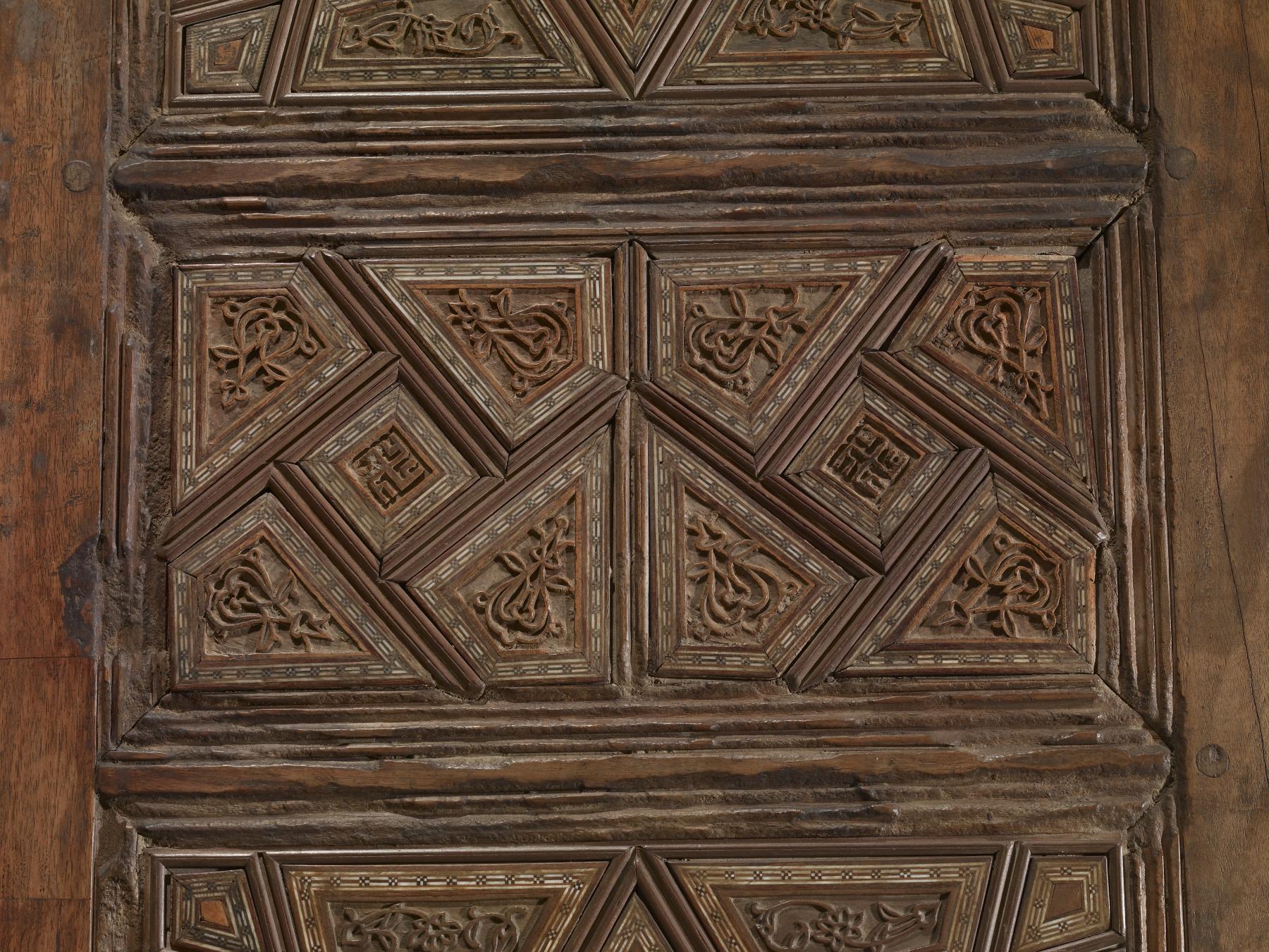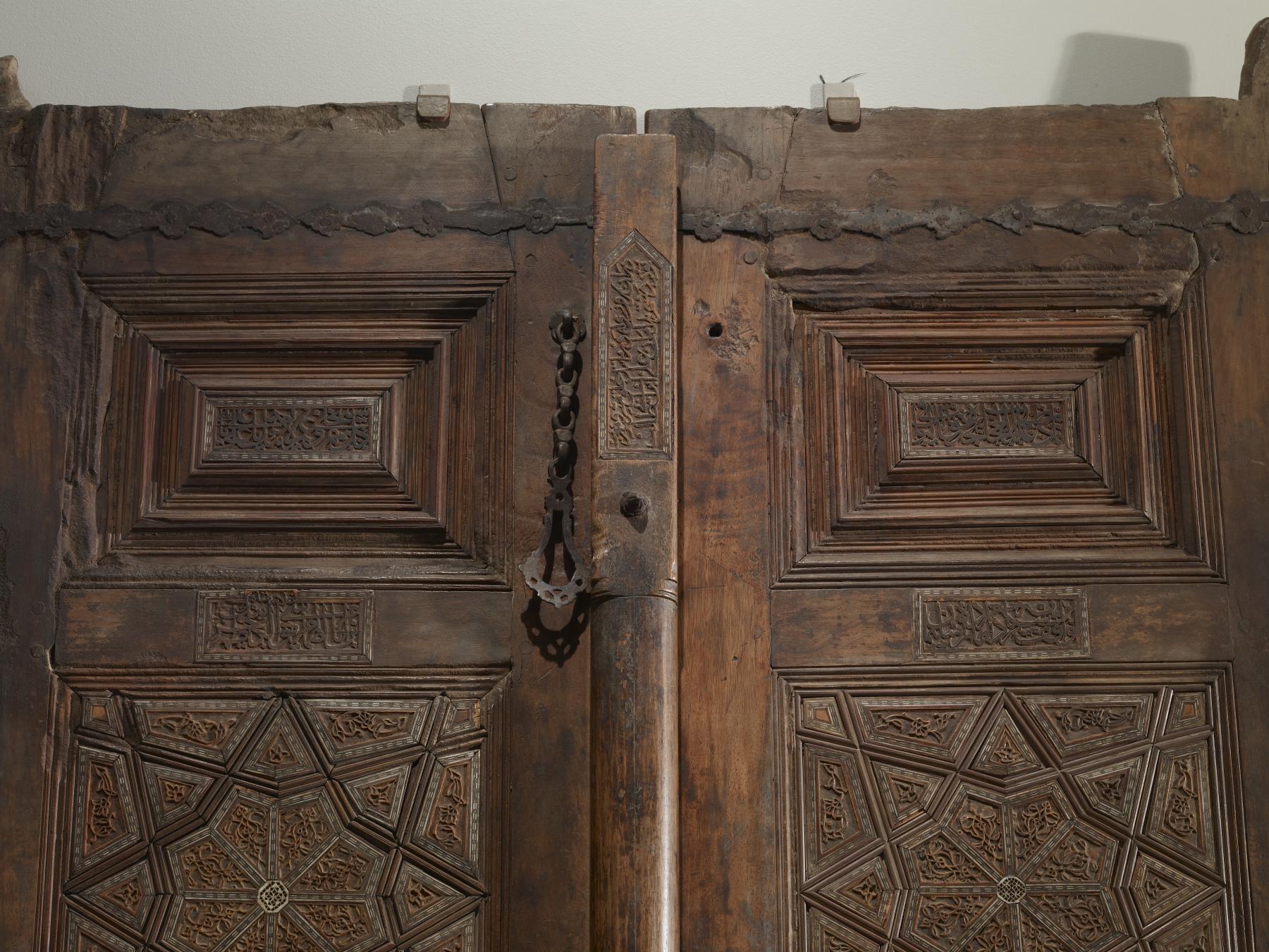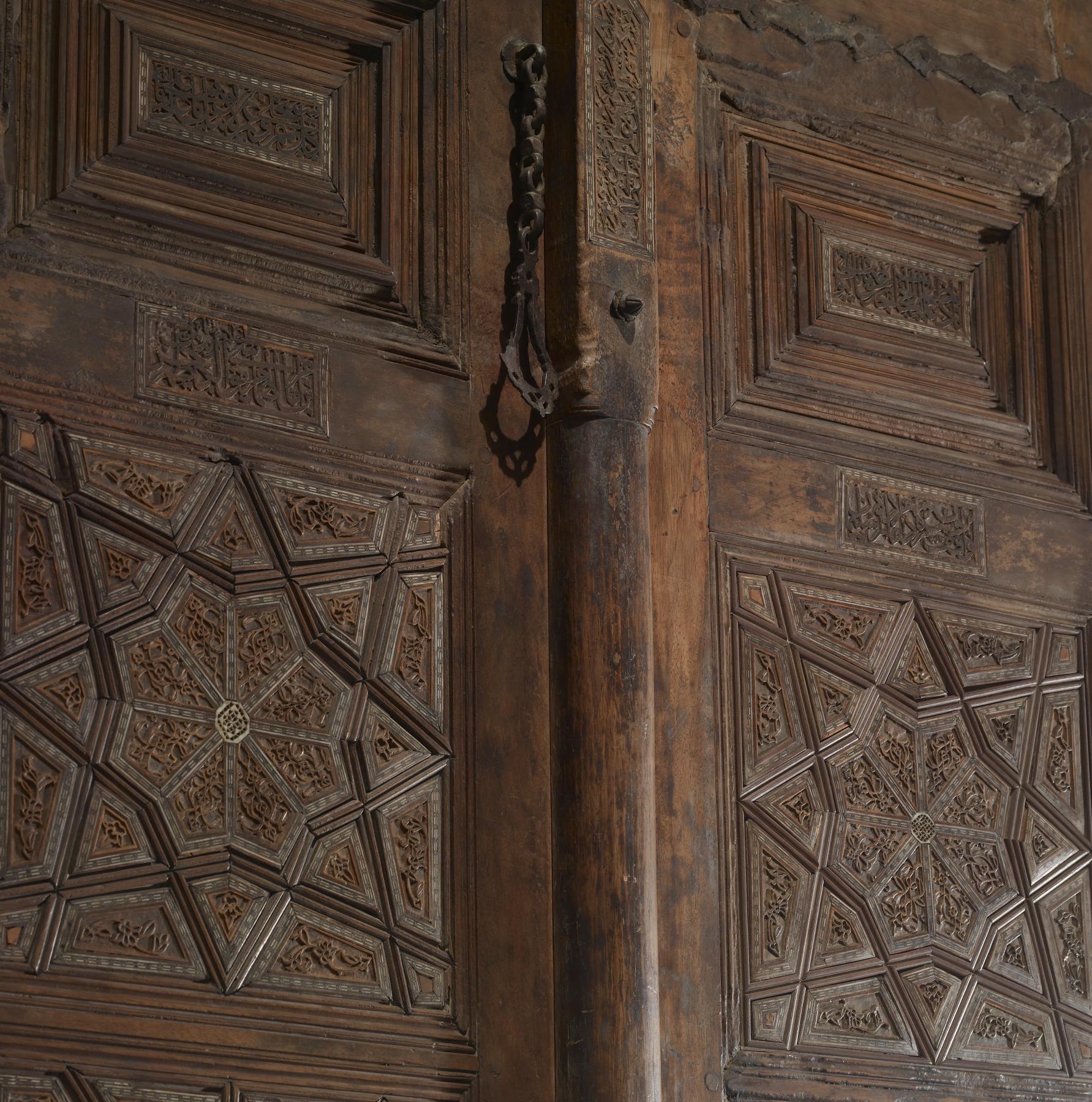Doors from the Tomb of Imamzada Sulayman
(Islamic World )
These doors originally opened into the mausoleum, or tomb, of Imamzada Sulayman, the son of a spiritual leader in Iran, where the Shia branch of Islam flourished. The intricately carved and inlaid decoration on the doors is typical of the ornamentation in religious buildings and includes inscriptions in praise of ‘Ali, cousin and son-in-law of Muhammad, and who, according to Shia Islam, was the rightful successor to the Prophet. Panels with radiating star designs evoke the eternal heavens. Anyone passing through these doors would have understood the decoration as a symbol of paradise, the hereafter to which all devout Muslims aspire.
The maker's full name, Qanbar ibn Mahmud, carved in the lower right panel, indicates that he was the son of a carpenter and confirms that crafts such as woodcarving were practiced by generations within the same family.
Inscription
Provenance
Provenance (from the French provenir, 'to come from/forth') is the chronology of the ownership, custody, or location of a historical object. Learn more about provenance at the Walters.
Henry Walters, Baltimore [date and mode of acquisition unknown]; Walters Art Museum, 1931, by bequest.
Exhibitions
| 1998-2001 | Highlights from the Collection. The Walters Art Gallery, Baltimore. |
Measurements
H: 76 1/2 x W: 40 5/8 x D: 2 13/16 in. (194.3 x 103.2 x 7.2 cm)
Credit Line
Acquired by Henry Walters
Accession Number
In libraries, galleries, museums, and archives, an accession number is a unique identifier assigned to each object in the collection.
In libraries, galleries, museums, and archives, an accession number is a unique identifier assigned to each object in the collection.
61.297

